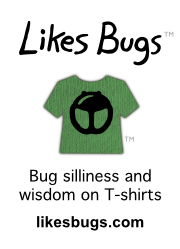We learned that the web at Lake Tawakoni was not a first. Reports of similar webs from other places were coming in, also involving long-jawed orbweavers (Tetragnathids).
David Tidgwell reported having seen a similar web at Balboa Park in Encino, California. This was in February 2005. He a sent a link to some absolutely thrilling photos he shot of the web. David reports that the web “completely enshrouded at least 200m of trees along the stream.” Here is one of his photos:
I counted eight long-jawed orbweavers on the full-sized version of one of the photos in his set. This was more evidence that the long-jawed orbweavers are indeed capable of building the web at Lake Tawakoni State Park.
Then entomologist David Richman, Curator of the Arthropod Museum at New Mexico State University, wrote a response to my first Lake Tawakoni spider report. His response is worth quoting nearly in full:
I have observed a similar aggregation of Tetragnatha at Newnan’s Lake in Alachua County, Florida. Perhaps not as big, but certainly impressive, the “web” consi[s]ted of thousands of Tetragnatha webs literally stacked one upon the other. In addition the trees nearby had numerous webs of Nephila and several araneids and Phidippus audax was also taking advantage of the situation. Several were seen stalking and eating the Tetragnathids and one was seen in a Tetragnatha web, being fed on by its owner- obviously made an error in judgement. The situation was a huge midge (Chrinomidae) emergence. They were so thick that you could literally breath them in. […] —David Richman (2 Sep 07)
Oh boy, this breathing midges reminds me of an amazing video I have to share with you. But you’ll have to wait until I get around to it.
In any case, it’s becoming harder to doubt that the long-jawed orbweavers (Tetragnathids) are somehow responsible for these webs. But do they somehow require other spiders as well to build them? These webs always seem to occur with lots of other kinds of spiders.



